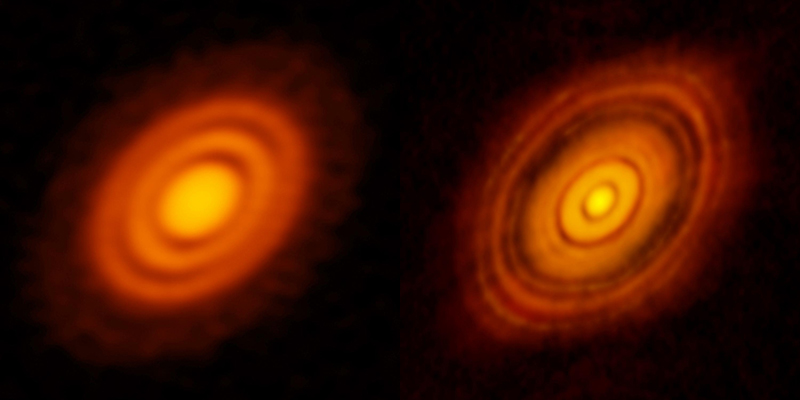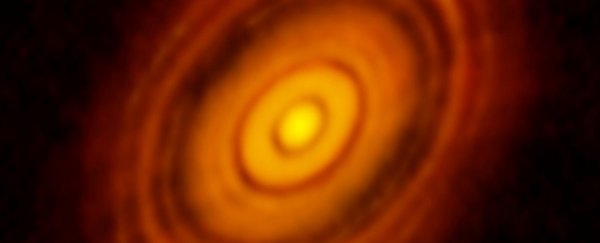Shortly after the Solar System formed, astronomers think it went through what's known as the Great Divide – a splitting up of the planets into two distinct groups. We weren't around to experience this cosmic schism, but a new study has put forward an intriguing hypothesis on how it would have occurred.
Put simply, the Great Divide left our Solar System with the smaller terrestrial planets closest to the Sun (including Earth and Mars), and the larger gas giant - or 'Jovian' - planets farther out (including Jupiter and Saturn).
Not only do these two groups of planets differ in size, they're different in their make-up: terrestrial planets are largely composed of rock and lacking in organic carbon compounds, whereas the Jovian planets are largely made up of gas, and rich in organics.
"The question is: how do you create this compositional dichotomy?" says planetary scientist Ramon Brasser from the Tokyo Institute of Technology in Japan.
"How do you ensure that material from the inner and outer Solar System didn't mix from very early on in its history?"
Up until now, we've been pinning the blame on the gravitational effects of Jupiter. According to this idea, the pull of the massive planet was enough to create a kind of invisible barrier between the inner and outer planets.
But Brasser and colleagues think this may not be the case. Their calculations point to a ring-like structure forming around the early Sun, creating a disk that acted as a physical barrier between two types of planet-forming materials.
"The most likely explanation for that compositional difference is that it emerged from an intrinsic structure of this disk of gas and dust," says geological scientist Stephen Mojzsis, from the University of Colorado Boulder.
Computer simulations run by the researchers showed that Jupiter wouldn't have been big enough in the early Solar System to block the flow of rocky material towards the Sun. If Jupiter didn't cause the schism, the team had to look for an alternative explanation.
 Disks pictured around distant stars. (ALMA / ESO / NAOJ / NRAO)
Disks pictured around distant stars. (ALMA / ESO / NAOJ / NRAO)
They found it in data from the Atacama Large Millimeter/submillimeter Array (ALMA) in Chile, which showed disks of gas and dust around fledgling stars. If such a ring had originally formed around our own star, it might have separated gas and dust into separate pockets of high and low pressure.
The researchers describe it as a "pressure bump", capable of sorting material into two distinct buckets in the early days of the Solar System. In fact, there may have been several rings responsible for creating the divide in planet types.
How materials were sorted in the early Solar System is also important knowledge for understanding the emergence of life on Earth.
Unlike the other terrestrial planets, ours bucks the trend by containing organic materials, suggesting those dividing disks wouldn't necessarily have been completely uncrossable – and fugitive carbon-rich materials may have scattered across the divide to trigger life on Earth.
This is yet another example of how studying growing star systems elsewhere in the cosmos can tell us more about how our own Solar System came into being, and about the first hints of life in our solar neighbourhood, too.
The research is published in Nature Astronomy.
